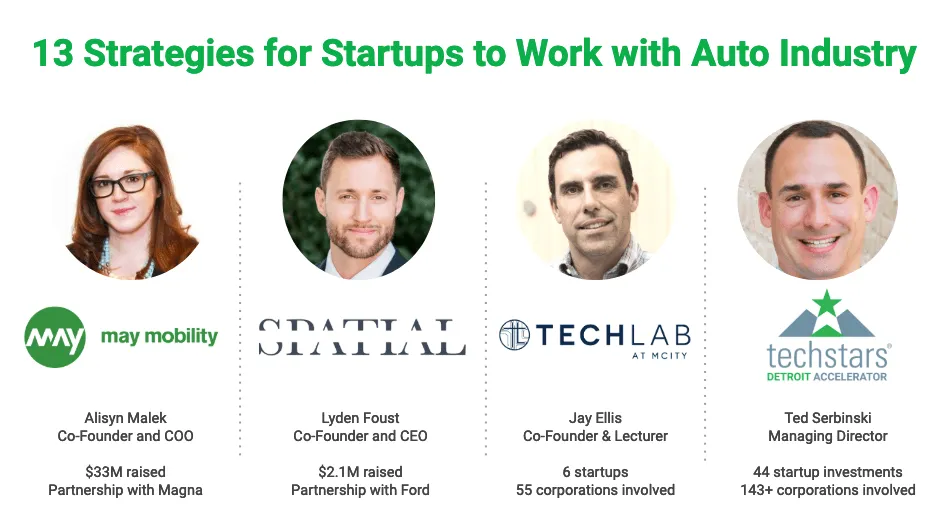Corporates: It’s Time To Flip the Switch to Active Innovation Before You Lose
Organizations are on a constant journey of survival from disruption. The Oregon Trail game involved embarking on a journey westward to Oregon from the Midwest. To win involved making consistently good decisions relative to the risk.

I grew up playing the computer game Oregon Trail. I am part of the micro-generation Xennials, also known as The Oregon Trail Generation, who had an analog childhood and digital young adulthood.
The Oregon Trail game involved embarking on a journey westward to Oregon from the Midwest. To win involved making consistently good decisions relative to the risk.
Balancing risk for each decision in the journey was about tradeoffs. Frequently these decisions cascaded into impossible conditions that led to team members dying of dysentery—the iconic pseudonym for “game over.”
So what's a video game from the 1990s have to do with corporate innovation?
Organizations are on a constant journey of survival from disruption.
Another staple of the 1990s, Blockbuster, died on its journey to stay relevant among disruptors like Netflix. Blockbuster sank trying to cross the digital river of innovation.
The Corporate Cheat Guide to Beating the Innovators Dilemma
Active players win games, not idle players watching.
1. Become an Active Player In The Game of Innovation
Over the past decade, there has been a rise of corporate-startup accelerators, corporate-startup m matchmaking, and startup innovation consulting groups.
In each case, corporations are relying on 3rd party groups to identify innovation. But once discovered, the corporation shifted to the sidelines and watched. They watched startups build their product, raise investment capital, and grow.
Corporations were watching others win when they had all the resources to win themselves. They didn’t need to go out and try and find innovation. They needed to play the game they were in. The business and industry they had a deep understanding of and where opportunities existed.
Is your corporation being proactive to win?
Long-term change is an investment, not an expense.
2. Fund Long Term Innovation as Equity
Corporations often struggle to make a case for innovation, focusing on the short-term instead of the long-term.
The focus is the P&L and how to improve it through new revenue and a reduction in expenses. Innovation doesn’t drive short-term revenue, so it becomes an expense that is often cut.
Shift the focus from the P&L to the balance sheet. Focus on long-term patient capital to drive learning and growth. This long-term focus compounds, leading to a strong immunity against disruption.
Is your corporation evaluating innovation as equity on the balance sheet or an expense on the P&L?
Avoidance of failure leads to failure. Start over to find a way to win.
3. Eliminate Sunk Cost Bias and Start Over
When you play The Oregon Trail, and your team dies of dysentery, you start over. A clean slate with no previous decisions to sabotage your next play at the game.
Blockbuster suffered because of its bias towards its real-estate footprint and cash cow of late fees. Their innovative efforts, including launching a Netflix-like competitor, were dead on arrival. Those innovation efforts inherited previous thinking and decisions—they all revolved around real-estate and late fees that were core to Blockbuster.
Innovation efforts, to be successful, need to be separated from the core business. A new team, product, and approach that can chart their own journey. An experiment that can be started over and over until it succeeds.
Is your corporation building failure into the model, letting new businesses start over to find success?
A better approach cannot be found if your map limits where you can go.
4. Free Innovators to Explore Outside Your Organizational Walls
Corporations build amazing stuff all the time that never makes it to the market. All of these amazing things starve for resources inside the organization.
Outside the organization, resources are bountiful. Expansive pools of investment capital can be tapped for growth. Talent that likes to build from scratch can be recruited (versus existing internal talent that is better at optimizing and maintaining existing processes). New partnerships can be established to expand product offerings and reach.
Look at Alphabet (formerly Google). They spun out Waymo as its entity. It’s free to chart a path that doesn’t rely on advertising. It has attracted over $5.5B in investment capital. It. has partnered with groups like Fiat Chrysler, Jaguar, Nissan, Volvo, Magna, and others.
Contrast this too much of that automotive industry that is operating within its silo. Which approach is leading to a better destination?
Is your corporation letting innovation find its own path to success or trapping it inside the organization?
You can't get to your destination by staying put.
5. Get Moving Before Winter Comes
If action is not taken, results will not follow. As Dan Gilbert once told me, ”Spreadsheets measure; they do NOT create.”
You can model it out. You can test and research. You can work with consultants to tell you what to do. But none of that creates new businesses that can disrupt your own business.
At the end of the day, winter is coming. Soon the trail will be impassible.
How far away are you from getting to your destination?

Thanks to Elliott Parker, Kelley Otto, and Lee Busino for contributing to this post.
Ted Serbinski Newsletter
Join the newsletter to receive the latest updates in your inbox.

